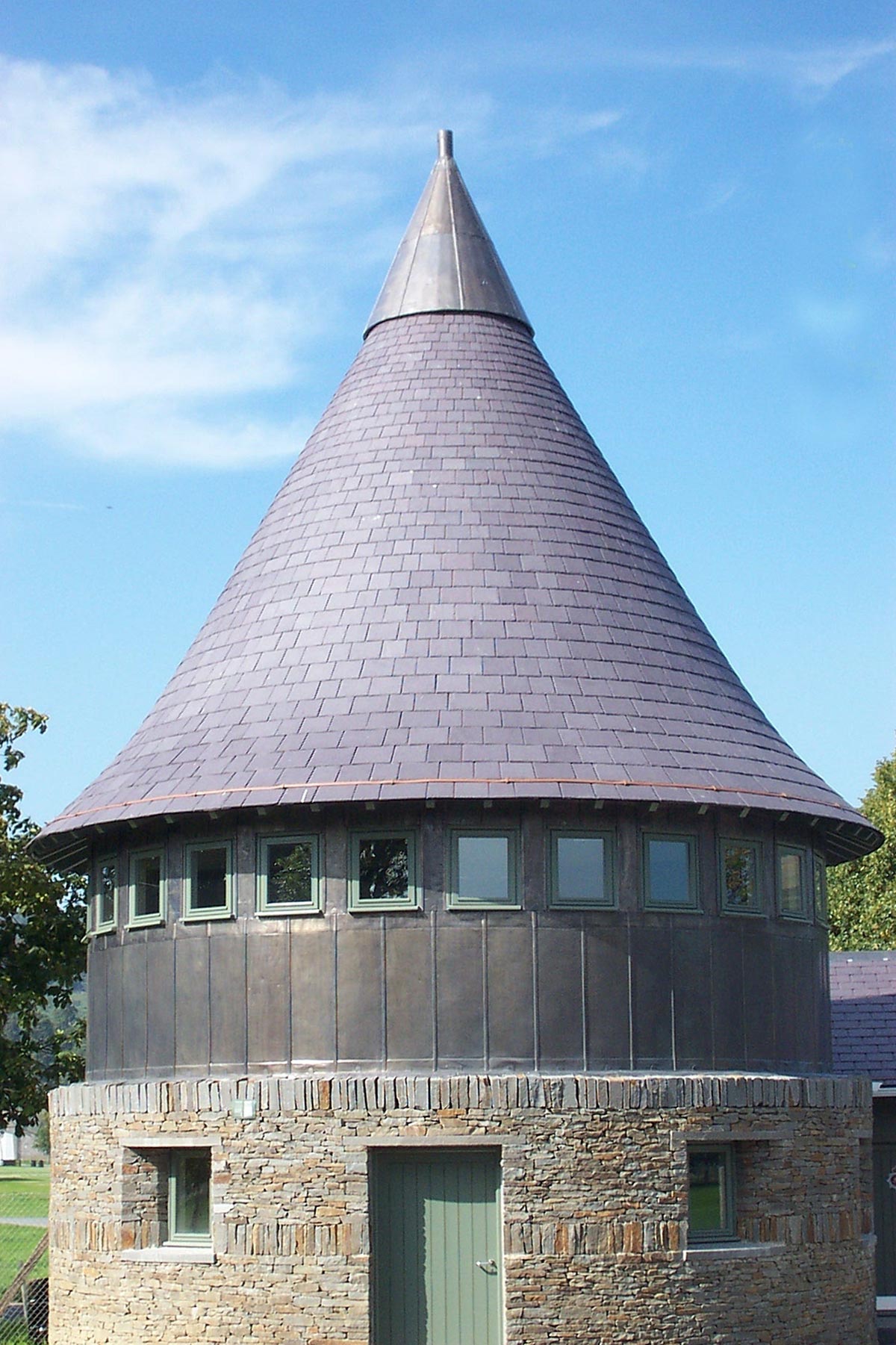
Entrance to Royal Welsh Showground, Built Wells, Wales
Year designation
Lithology
Aesthetics
Geological settings
Paleozoic – Cambrian – Llanberis Slate Formation
Location
Gwynedd, North Wales
Entrance to Royal Welsh Showground, Built Wells, Wales
Once the best roofing slate in the world
Slate has been exploited in the region for nearly 2000 years. Its first recorded use was in the Roman period in Wales, and subsequently from the sixteenth century throughout the British Isles. From the late eighteenth century production expanded rapidly supplying markets worldwide especially to northern Europe and the British colonies, later also to North and South America, Japan, Africa and Oceania – Australia, New Zealand and Hawaii. Some examples: Buckingham Palace in London, Dublin Castle, Amalienborg in Denmark, Hotel de Ville in Paris, Royal Mausoleum in Hawaii and the boston airport. Slate has been used in all its forms but most notably as roofing slates in the construction of buildings at all levels in society and for buildings of the highest historical and architectural importance. Modernisation of the industry has enabled Cambrian Welsh Slate to continue to be quarried today in an environmentally sensitive manner. The slate quarrying regions produced distinctive cultures but often separated by language and religion. The business functioned through the medium of the Welsh language, making it unique within major capitalised British industries. The workers were almost entirely Welsh speaking and Non-conformist worshippers in their local chapels; the management tended to be monoglot English speakers and Anglican worshippers.
- Author(s)
Terry Hughes


